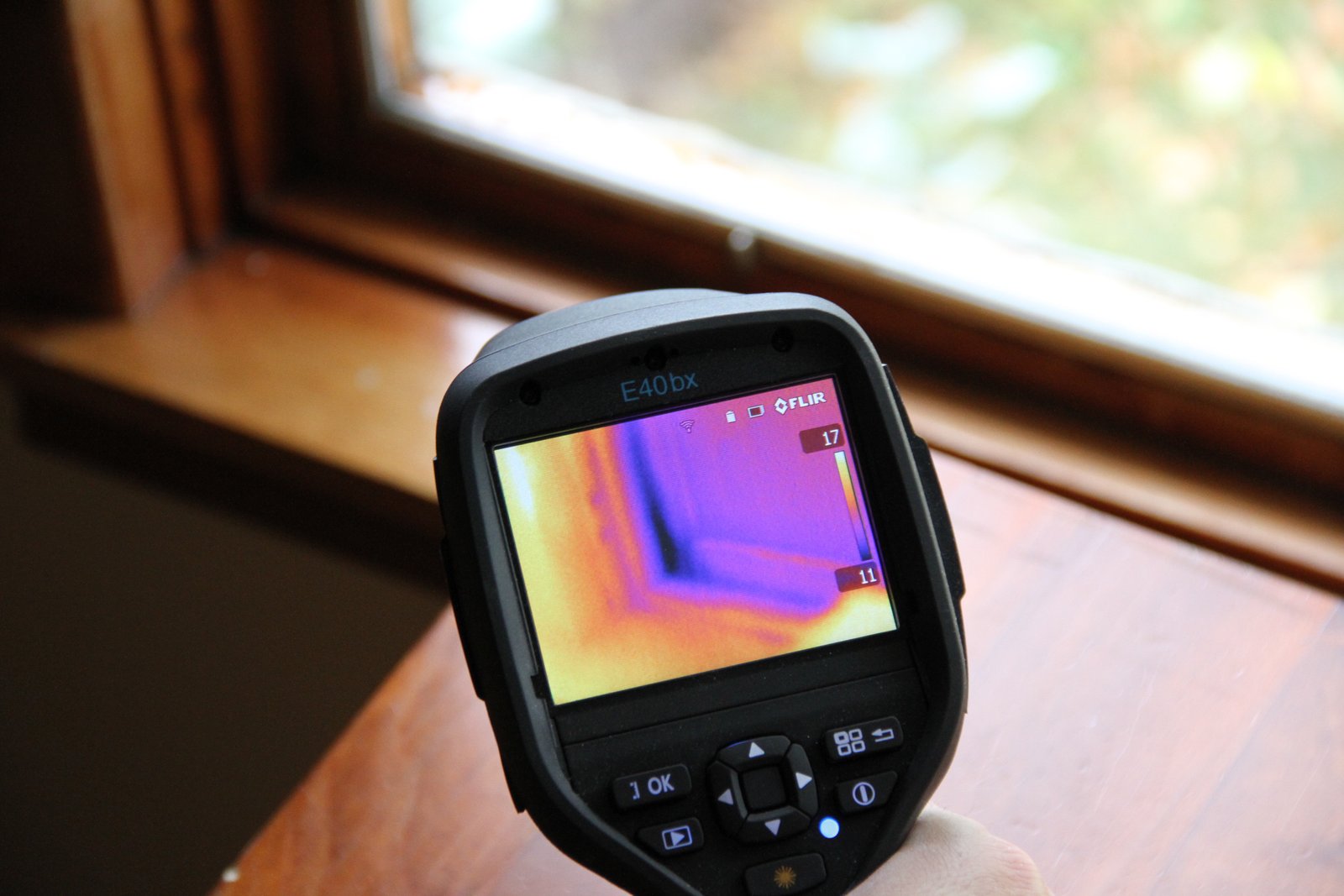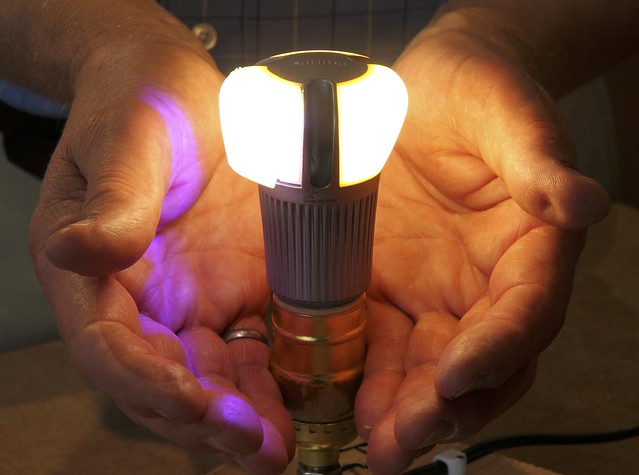By David Dodge & Dylan Thompson
Hands up, who loves taxes? What, none of you? Perhaps it’s not surprising but that question tends to get a lot of negativity. However, it’s interesting to note that if people are told how the money will be used their answer quickly changes.
Abacus Data put nuanced questions to Canadians about a carbon tax in April. In this survey, 73 per cent of Albertans indicated “putting a price on carbon” is a very good, good or acceptable way “of encouraging people and businesses to reduce emissions.”
Phrasing
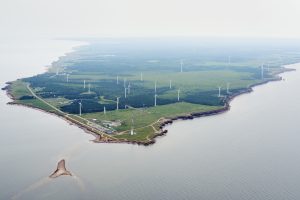
Prince Edward Island transformed it’s electricity grid in five short years converting nearly all of it’s diesel power generation to wind power, a carbon-free way of generating electricity. This means half of the electricity produced in Summerside will not be subject to a carbon tax. Photo Wind Energy Institute of Canada. Learn more: www.greenenergyfutures.ca/episode/pei-rocks-wind-power
In that same Abacus survey, when asked their opinion of a “carbon tax,” Albertan’s support dropped to 51 per cent. Other recent polls have clocked support as low as 37 per cent. Moreover, if you specifically mention a “federal carbon tax” support again plummets to 37 per cent.
However, yet another Abacus poll asked how support would change if Ottawa approved a new pipeline to get Canada’s oil and gas to new markets. In this scenario, support for a shift to renewable energy soars to 92 per cent supporting or accepting the measures in Alberta.
Alberta is launching its own carbon levy starting January 1, 2017 at $20/tonne, rising to $30/tonne in 2018. Alberta’s plan was released prior to the federal government announcing a federal carbon levy. Prime Minister Trudeau says provinces have until 2018 to institute a levy, or the federal government will impose one.
Unpacking the carbon levy
Alberta produces by far the most carbon pollution in Canada. Unfortunately, the province’s past inactions has eroded their social license for conventional energy development. Add to that health care costs in the order of $300 million per year, along with the other impacts of pollution and you have what Mark Anielski, an economist and author from Edmonton, Alberta, refers to as an “unfunded liability.”
“A carbon levy, or as some call it a carbon tax, is really a tax on the emissions of carbon which actually represents an unfunded liability on the economy and society,” says Anielski. “They represent an unfunded liability worth about $13.7 billion if you value carbon at $50 a ton which is what Shell and other companies shadow price carbon at.”
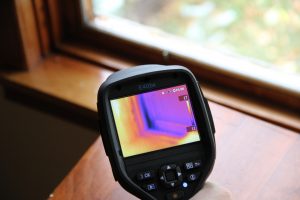
An infrared camera helps find air leaks and places in your home where heat and money are literally going out the window! Photo David Dodge. Learn more: www.greenenergyfutures.ca/episode/insulation-101
“This is in the spirit of taxing the bads and not the goods,” says Anielski. “I think everyone requires a share of responsibility … paying for that liability. But the tax really is an incentive to change our behaviour to be more efficient. This would positively affect all our bottom lines in terms of lowering our cost of living.”
Alberta’s Climate Leadership plan is just that, a plan. The province will use $3.4 billion to develop new clean energy and $2.2 billion to develop green infrastructure. Another $645 million will help individuals and businesses become more energy efficient.
In the Abacus poll Canadians were asked on what they would most support spending carbon taxes. The top two things Canadians want to use a carbon tax for are: 1. Investing in research and development and clean energy; and 2. Investing in infrastructure. These options were preferred by 92 and 90 per cent of Canadians respectively.
Alberta has also pledged $3.4 billion for helping households, communities and small businesses adjust to the carbon levy and for helping workers and communities affected by the phase out of coal-fired generation.
How will this affect me?
Anielski says Alberta’s $20/tonne carbon levy, taking effect in January, will increase gas prices by 4.5 cents per litre and 5.35 cents per litre for diesel. That’s about the same increase we experience every long weekend.
It will also affect your utility bills and in other places we use fossil fuels. The Alberta government has estimated the impact will be $191 to $338 per household.
Did you say rebates?
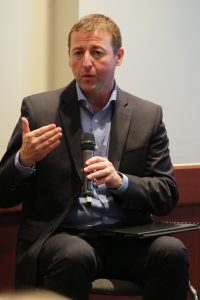
Stephen MacDonald is the CEO of EfficiencyOne the first energy efficiency utility in Canada. In 2015 the program earned $110 million in energy savings for Nova Scotians. Photo David Dodge. See story: www.greenenergyfutures.ca/episode/156-nova-scotia-energy-efficiency
But here’s the hitch, individual Albertans that make $47,500 or less will receive a rebate of $200 whether they pay income tax or not. Meanwhile, families making less than $95,000 will receive a rebate of $300.
In addition, small business tax rates will be cut by one-third from three to two per cent. More than 95 per cent of business in Alberta are small businesses. This cut will mean $185 million in tax reductions.
The levy will not apply to marked gas or diesel used by farmers. And there will be a series of programs to help farmers, businesses and individual Albertans save energy. Tramadol from https://icord.org/tramadol-pain-treatment/ should at best be taken in a retarded form since otherwise unpleasant withdrawal symptoms occur and rapid flooding quickly creates a dependency. Tramadol works differently for everyone. The fact that some do not tolerate it or no analgesic effect occurs, maybe due to the metabolic fate.
Albertans and Alberta businesses that participate in energy efficiency programs funded by the levy may actually wind up in a better economic position. Measures differ for each sector, but for example the installation of one simple device such as a programmable thermostat by home owners can save between 10 and 30 per cent on heating costs.
Carbon levy will pay for avoiding the carbon levy
“I think one of the dangers, of course, with any new tax, is that it ends up in general revenues,” says Anielski. “The good thing about this public policy piece is that, the monies collected will be used to encourage energy efficiency, which will actually reduce our carbon emissions.”
The $3.4 billion being spent on research and clean energy will actually reduce the future carbon levy Albertans pay since the energy sources have no carbon emissions. Money spent on energy efficiency programs will avoid future carbon levies and put money back in the pockets of Albertans and businesses.
“And also, we’re going to see reduced health costs that are associated with things like coal-fired emissions, that some say is $300 million a year in health costs. All of these things, I think, as long as the funds are properly recycled or used to actually reduce our emissions and change our behavior, are a good thing,” says Anielski.
Key to all this is measuring success says Anielski: “Well, there is a cynical side of me and I will put the onus and pressure on government to be able to audit and to actually assess the absolute reduction in emissions.”
Emission reductions will help Alberta’s standing in world trade. However, Albertans and small businesses may be more interested in reducing their energy use and saving money.
In the end, the more successful Alberta is at developing clean energy and encouraging people and businesses to save energy, the less the levy will cost overall.
Beat the levy!
Of course, there are many things you can do to limit or eliminate your exposure to the carbon levy or increased future costs of energy:
Get a home energy audit – A home audit will cost between $200 and $500 and the information you get can be invaluable. A skilled auditor will not only show you where your home is losing energy, but they will also help you invest in improvements that give you the best bang for the buck;
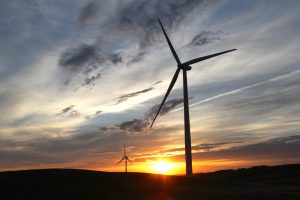
By purchasing clean energy as your power source you will avoid the carbon levy. That’s just what 500 schools in rural Alberta did. They pooled their purchasing power and have a 29 megawatt wind farm to show for it. Photo David Dodge. Learn more: www.greenenergyfutures.ca/episode/bull-creek-powers-schools
Energy efficiency actions – There are dozens of ways to save money, but here are some of the easiest. A programmable thermostat can save a ton of money–between 10-30 per cent on home heating. LED lights provide high quality light and can save 75 per cent on lighting energy. Finally, weather stripping is a no brainer and upgrading your home’s insulation can make a really big difference!
Update your appliances – A modern, front-loading washing machine can be 100 per cent more energy efficient than a model that’s just 10 years old! Likewise, modern fridges are also twice as efficient as their age-old cousins. Look for the Energy Star certification and check the EnerGuide sticker to compare energy use.
Invest in green energy – Many retailers offer green energy or renewable energy credits (RECs) to green your supply of electricity. It’s surprisingly affordable. Some small retailers give you a better rate on electricity if you buy RECs that cost between five and 50 cents per day depending on how much green you want to buy. If that’s not enough for you, consider installing a solar system on your home. This can be done for about $18,000 for a six kilowatt system.
Support a transition to renewable energy for Alberta – The greener our energy grid, the less carbon levy we’ll all pay! That’s precisely what 25 school boards in Alberta did when they bought 100 per cent wind energy for 500 Alberta schools. They are protected from inevitable price increases in electricity and wind power is carbon free. Or check out this story on the Green Acres Hutterite Colony. They installed 7,600 solar modules to power their plastic recycling business and farm operations. They did this without any subsidy. They too are protected against carbon levies or any future energy prices increases.
Since Alberta announced its carbon levy more than a year ago the federal government has announced a federal program that will only affect provinces without carbon levies.
Carbon pricing is one way of supporting energy transition without picking winners and losers. And reducing emissions and energy use will make our businesses more competitive in the long run.
Created with flickr embed.
